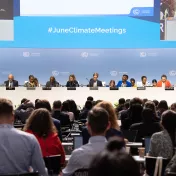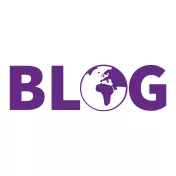With the world on the verge of overshooting the 1.5°C limit, adaptation to climate change is essential in all parts of the world, in every sector, and in every investment made. Without it, climate change becomes – as the Brazilian president of COP30 just said – a poverty multiplier affecting health, risking lives, and threatening ecosystems and economies. The good news is that adaptation works: the latest 2025 United Nations Environment Program (UNEP) Adaptation Gap Report finds that every USD spent on coastal protection avoids USD 14 in damages. But at the same time, adaptation is drastically undervalued and underfunded. The UNEP report’s title ‘Running on Empty: The world is gearing up for climate resilience – without the money to get there’ is a testament to this alarming situation. Even the National Adaptation Plan (NAP) progress report, according to which a growing number of countries – but still only 67 – have submitted NAP documents to the UNFCCC, cannot gloss over this fact. The COP30 presidency dedicated its 8th letter to the topic, and raised ambitions by declaring adaptation to be the next step in human evolution. COP30 must be the COP of adaptation – but what do we need to get there? In this blog post, we explain Germanwatch’s key demands on adaptation on the first day of COP30, taking into account the most recent reports and discussions.
COP30 must conclude the UAE-Belém Work Program
The Global Goal on Adaptation (GGA) under Article 7 of the Paris Agreement remains one of the few elements not yet operationalised. COP28 launched the UAE Framework for Global Climate Resilience, setting seven thematic and four process goals. Work will continue at COP30 in Belém toward adopting around 100 indicators to track progress in reducing vulnerability, increasing adaptive capacity, and building resilience. These indicators, in addition to measuring adaptation outcomes, must include clear measures for international support – finance, capacity building, and technology transfer – allowing developing countries to implement adaptation effectively. Despite political differences over these ‘Means of Implementation’ (MoI), agreement on the list of indicators in Belém is essential to move from negotiation to real action.
What it takes from the COP30 presidency, the SB chairs, and the adaptation co-facilitators is a carefully structured and streamlined adaptation negotiation that leads to a decision on a solid indicator list without negotiating the full list indicator-by-indicator – which would waste valuable time – but allowing for robust MoI indicators. Country positions vary greatly not only on MoI indicators but also on the width and depth of the indicator list in terms of disaggregation. Substantial progress will require skills in facilitating negotiations and inclusive consultations. Of course, it will also require Parties’ willingness to find compromises, which must be strong enough to enable and drive the protection of the most vulnerable communities and ecosystems from climate change impacts. UNEP finds that so far, adaptation results are reported mostly as outputs, such as the number of risk assessments or trainings, and don't focus on the quality of adaptation outcomes. The GGA indicators are therefore necessary to guide thinking about implementation away from outputs toward actual impact. According to the UNEP report, disaggregation – for example in terms of gender and inclusion – is also necessary to target measures at the most vulnerable groups.
Consequently, the GGA decision needs to build the bridge to action on the ground – or as the COP presidency urges Parties: ‘The GGA is not merely a negotiation item – it is an economic and moral compass. It guides us to act together, scale up local successes globally and integrate adaptation into national policies and fiscal planning.’
A decision on the Baku Adaptation Roadmap
What will happen with the GGA, the targets, and indicators after the completion of the UAE–Belém Work Program? Many open questions remain from previous COP decisions: how will the UNFCCC negotiations review the implementation process and progress on adaptation measures in the future? How will knowledge be shared? What form will the reporting on the next iterations of the Global Stocktake take? How will the best available science under the IPCC be incorporated? How will the GGA be reviewed? And how will transformational adaptation be handled? Discussion is also urgently needed on ways to address the pressing gaps regarding adaptation finance, implementation, data, and equity identified by UNEP.
These and many more questions need to be answered, and the space to do so is the Baku Adaptation Roadmap established at COP29. The COP30 presidency rightly calls for ‘advancing the Baku Adaptation Roadmap (BAR) to accelerate GGA delivery through concrete steps.’ In addition, there is already substantial work and numerous bodies working on adaptation within the UNFCCC – such as the Adaptation Committee, the Nairobi Work Programme, and the LDC Expert Group. The BAR could therefore make the existing formats more effective and fill in the gaps – which is practical and in line with ‘slimming the adaptation agenda’.
The BAR – if done well – could also shape the standing but rather unspecified agenda item on GGA that was established at COP29 and serve as a platform for regular discussions of key GGA-related matters in the future. As such, BAR could hopefully help address some of the gaps identified in the recent UNEP report.
Adoption of a new grant-based target for adaptation financing
‘Running on empty: The world is gearing up for climate resilience – without the money to get there’: The latest numbers from 2023 show that public adaptation finance flows from developed to developing countries amounted to only USD 26 billion, a slight decline compared to the year before. If this trend continues, which is likely given the current political environment and ODA cuts, the current adaptation finance goal – the Glasgow Climate Pact goal of doubling 2019 adaptation finance flows to approximately USD 40 billion by 2025 – will be missed. The Pact also runs out at the end of the year. In case there is no agreement on a new adaptation finance target in Belém, this leaves the world with no specific finance goal for adaptation, since last year’s new collective quantified goal for climate finance (NCQG) does not provide thematic sub-goals.
Possibly no goal and insufficient finance – this is in stark contrast with developing countries’ adaptation finance needs of USD 310–365 billion per year by 2035, which amounts to at least 12 times the current international public funding for adaptation measures. Civil society calls for the adoption of a new target at COP30 that is six times higher than the 2019 amount – basically at least tripling the doubling of the Glasgow pledge, approximately 120 million USD a year by 2030. As this is far removed from actual needs, a process for setting a needs-based goal has to be initiated at the same time.
Not only the quantity, but also the quality of finance is a concern. UNEP finds that debt instruments are increasingly used to finance adaptation, and that for the first time, non-concessional loans exceeded concessional loans. This raises concerns regarding long-term affordability and equity. The incoming presidency urges ‘countries and institutions to increase the quantity and quality of adaptation finance, ensuring it reaches the most vulnerable.’ We cannot allow countries that are already suffering from a significant debt burden to fall further into a downward spiral, which is why public, grant-based adaptation finance remains key and needs to be increased.
Despite the urgency and importance of a new adaptation finance goal, at the start of COP30 it remains completely unclear where such a goal might be discussed and decided upon. Will it be included in the GGA decision? Will COP30 open the agenda for climate finance (Art 9.1 of the Paris Agreement) and let the new adaptation finance goal be part of it? Will the COP30 presidency rather go for a cover or omnibus decision into which the goal would be included? And maybe most critically: will developed countries be willing to commit to such a target?
Unfortunately, this kind of uncertainty about the agenda and the dedicated negotiation time and space for an item of this importance invites extended discussions about the negotiations themselves rather than the actual issue. Action is needed on all fronts – developing country Parties need to push for the inclusion an adaptation finance goal in the agenda, developed countries have to recognise their NCQG shortcomings and allow for such discussions, and the COP30 presidency should provide clarity as soon as possible on where and when the new goal on adaptation finance will be discussed.
Keep vigilant on the role of private finance in adaptation
There is growing concern about the push to expand the role of private finance in adaptation. The COP30 presidency calls for ‘exploring innovative approaches such as guarantees and blended finance,’ which risks shifting responsibility away from public, grant-based support and burdening vulnerable countries with costly or inequitable financing.
Several recent reports (e.g. by MercyCorps, OECD, WorldBank) have looked into this issue from different angles – and the results demand caution: adaptation remains first and foremost a public good and will require public finance. There is a limited role for private sector finance to invest in selected sectors such as agriculture, tourism, or infrastructure, especially in middle-income countries. The private sector’s potential to finance adaptation priorities in developing countries is estimated at around 15% overall – which shows growth opportunities compared to the current 3%. But in Least Developed Countries (LDCs), this potential is only 5%.
Finance is also not the same as funding. Innovative models can provide finance from the private sector – but who pays for them in the end? Private finance means finding a business case, generating revenue through (re)payments of either the government or households, and therefore risks commodifying public goods. The private sector should be enabled to invest in appropriate settings, but at the same time, major polluting industries must be held accountable and contribute their fair share to climate finance. Innovative finance instruments should also include polluter-pays taxes, not only de-risking investments. The resulting public finance will actually fill the funding gap.
Advance NAPs from planning to implementation
Insufficient MoIs (finance, capacity building, technology transfer) have also been identified as a key obstacle to move NAPs from planning to implementation. The latest NAP progress report contains some good news as it shows a decisive shift from conceptualisation and planning to consolidation and implementation. As of September 2025, 144 countries had initiated and launched the NAP process, and 67 developing countries, including 23 LDCs and 14 SIDS, had submitted their NAPs to the UNFCCC. Many countries have successfully laid the institutional, analytical, and informational foundations required to strengthen resilience and integrate climate change adaptation into national and sectoral development planning. In their Biannual Transparency Reports (BTRs), countries have also reported on many adaptation measures that have already been taken.
Nevertheless, these actions remain fragmented, and resource and capacity constraints as well as a project-based, piece-meal approach by climate funds resulted in insufficient action relative to the escalating climate risks. Dedicated modalities to support full NAP implementation is needed. The Adaptation Gap Report equally finds that while 90% of countries worldwide have a national planning instrument in place, in 36 countries these are concerningly outdated – risking maladaptation. Beyond a lack of sufficient MoIs, other modalities are also slowing down NAP progress. Sustaining coordination and national ownership of adaptation efforts is hindered by limited institutional capacity, dependence on external support, and difficulties in accessing climate finance due to complex procedures, weak national institutions, and scarce implementing partners.
The current capacity to track and report on adaptation action is low. Only 36 countries reported Measuring, Evaluation and Learning (MEL) systems that aim to track the implementation of adaptation actions in their BTRs. Furthermore, many countries whose NAPs contain indicators have not yet operationalised a MEL system that enables data gathering and reporting. Here, the GGA indicators can facilitate reporting, while helping to avoid that each MEL system needs to reinvent the wheel. Once finalised, countries will have a menu of options to choose indicators that best fit their national circumstances.
Rich countries should provide more MoIs tailored to receiving countries’ needs, from vulnerability assessments to planning, implementation, and evaluation, and work with climate funds and in their bilateral programming to ease access.
Let’s not forget about Loss and Damage
The COP presidency rightly warns that ‘as adaptation gaps widen, the growing burden of loss and damage further erodes fiscal space for long-term investment, especially in developing countries.’ While the establishment of the Fund for Responding to L&D was a major milestone, momentum has slowed since COP28. Pledges have stalled and the finance gap remains massive, estimated at USD 447–894 billion annually by 2030. Negotiations on L&D currently seem stuck, with little agreement on the third review of the Warsaw International Mechanism and unclear prospects for integrating L&D into the Baku to Belém Roadmap. Devastating disasters such as the recent Hurricane Melissa in Jamaica remind us with increasing frequency not only that L&D cannot fall from the agenda but also why adaptation, as a key to avert and minimise L&D, must be sufficiently funded and finally implemented at scale.
Remembering Belém for its progress on adaptation
The to-do list is long, and time is short in Belém to cover all the relevant adaptation items. Negotiations must leap forward to close this chapter of the Paris Rulebook and move towards supporting implementation – which is also a part of the COP30 presidency: ‘Beyond negotiations, the COP30 Climate Action Agenda must showcase real solutions so that Belém is also remembered as the COP of adaptation implementation.’ In our words: the operationalisation of the GGA in addition to a new and ambitious adaptation finance goal will be decisive in determining whether this goal becomes a real political lever for ambitious and fair adaptation policies that serve people and ecosystems.
Data for the blog post
Date:Contributors: Lina Adil, Lisa Schultheiß, Ute Sudmann





